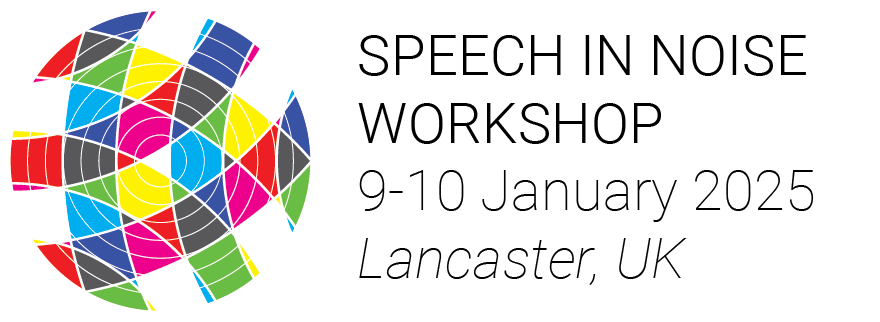P66Session 2 (Friday 10 January 2025, 09:30-11:30)Relating amplitude modulation rate discrimination to speech-in-noise perception in cochlear implant users
For cochlear implant (CI) listeners speech information transmission is reliant upon the ability to process the amplitude-modulated (AM) envelope of speech sounds independently in different channels. This can be hindered for many reasons, not least due to, spread of electrical current or neural survival.
We employed a psychoacoustic task to explore AM processing. We recruited 12 typical hearing (TH) adults and 12 adult CI listeners. Modulated pure tones of two different rates (13 versus 40 Hz) were discriminated in a three-interval two-alternative forced choice task, where the modulation depth was adjusted adaptively to derive an AM discrimination threshold. Testing was conducted with and without speech envelope interferers on neighbouring channels. In the adaptive procedure the modulation depth of the interferer was adjusted in the opposite direction to the target. The modulation depth at threshold of the target AM stimulus is reported. Stimuli were delivered through headphones (HD600s). All front-end noise reduction features were de-activated on the sound processors of the CI listeners. Acoustic stimuli were presented at 5 centre frequencies, aimed to stimulate the same 5 electrodes in the CI users and equivalent frequencies for TH group, exploring AM processing across the frequency range up to 4 kHz, the important frequency range for speech.
Results were compared to speech-in-noise perception results using a children’s coordinate response measure (CCRM) test in which a female speaker uttered a phrase, ‘show the dog where the COLOUR NUMBER is’ where the listener had to identify the colour and number which changed on a trial-to-trial basis. Six colours and nine monosyllabic numbers were included in the stimulus set. Speech was presented in 6-talker (3 male and 3 female speakers mixed) babble noise which was adaptively varied in level to obtain the speech reception threshold (SRT).
For all participants, AM discrimination was poorer in the presence of interferers than for absent interferers. For the CI listeners performance worsened with increasing centre frequency, an effect which may have been driven by a subset of individuals with particular high thresholds for higher centre frequencies. We speculate that the measure may differentiate between problems of neural survival and channel interaction which could cause these effects. Average (across all centre frequencies) AM thresholds in the presence of interferers correlates with CCRM SRTs for both groups.

